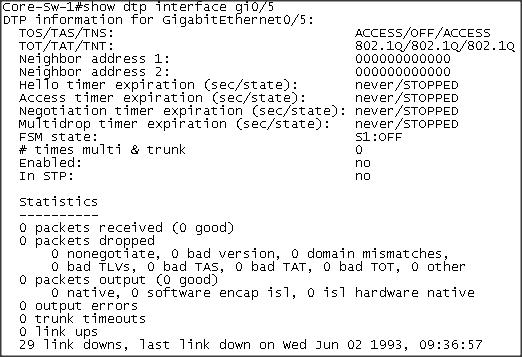
VFR is designed to work with any feature that requires fragment reassembly (such as Cisco IOS Firewall and NAT). If the IP datagram does not receive all of the fragments within the specified time, the timer will expire and the IP datagram (and all of its fragments) will be dropped.

In addition to configuring the maximum threshold values, each IP datagram is associated with a managed timer. When the maximum number of fragments per datagram is reached, subsequent fragments will be dropped, and an alert message such as the following is logged to the syslog server: "VFR-4_TOO_MANY_FRAGMENTS." When the maximum number of datagrams that can be reassembled at any given time is reached, all subsequent fragments are dropped, and an alert message such as the following is logged to the syslog server: "VFR-4_FRAG_TABLE_OVERFLOW." (Both of these parameters can be specified via the ip virtual-reassembly command.) To avoid buffer overflow and control memory usage, configure a maximum threshold for the number of IP datagrams that are being reassembled and the number of fragments per datagram. Buffer Overflow Attack-In this type of denial-of-service (DoS) attack, the attacker can continuously send a large number of incomplete IP fragments, causing the firewall to lose time and memory while trying to reassemble the fake packets.VFR drops all fragments within a fragment chain if an overlap fragment is detected, and an alert message such as follows is logged to the syslog server: "VFR-3-OVERLAP_FRAGMENT." When the firewall reassembles the IP fragments, it might create wrong IP packets, causing the memory to overflow or your system to crash. Overlapping Fragment Attack-In this type of attack, the attacker can overwrite the fragment offset in the noninitial IP fragment packets.VFR drops all tiny fragments, and an alert message such as follows is logged to the syslog server: "VFR-3-TINY_FRAGMENTS." Thus, the ACL rules that have been configured for those fields will not match. Tiny Fragment Attack-In this type of attack, the attacker makes the fragment size small enough to force Layer 4 (TCP and User Datagram Protocol (UDP)) header fields into the second fragment.VFR is responsible for detecting and preventing the following types of fragment attacks: Automatically Enabling or Disabling VFR.To use fragmentation support for Cisco IOS Firewall, you should understand the following concept: (If the application fails, the session will be blocked.) Information About Virtual Fragmentation Reassembly Thus, virtual fragmentation reassembly may fail. The Session Initiation Protocol (SIP) and the Real-Time Streaming Protocol (RTSP) do not have the ability to parse port information across noncontiguous buffers. Routers placed in the asymmetric path may not receive all of the fragments, so the fragment reassembly will fail. The reassembly process requires all of the fragments within an IP datagram. VFR should not be enabled on a router that is placed on an asymmetric path. This performance impact will vary depending on the number of concurrent IP datagram that are being reassembled. VFR will cause a performance impact on the basis of functions such as packet copying, fragment validation, and fragment reorder.

Restrictions for Virtual Fragmentation Reassembly Performance Impact
Ip virtual reassembly how to#

Ip virtual reassembly software#
Use Cisco Feature Navigator to find information about platform support and Cisco IOS software image support. Feature History for Virtual Fragmentation Reassemblyįinding Support Information for Platforms and Cisco IOS Software Images Virtual fragmentation reassembly (VFR) enables the Cisco IOS Firewall to create the appropriate dynamic ACLs, thereby, protecting the network from various fragmentation attacks. These inabilities allow the fragments to pass through the network without being examined or without dynamic access control list (ACL) creation. Currently, the Cisco IOS Firewall-specifically context-based access control (CBAC) and the intrusion detection system (IDS)-cannot identify the contents of the IP fragments nor can it gather port information from the fragment.


 0 kommentar(er)
0 kommentar(er)
